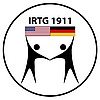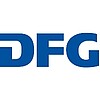B8 (2013 - 2016) – Functional relevance of HIF-1 for granuloma formation in Histoplasmosis
Dirk successfully defended his thesis in December 2016!!
Publications:
1: Friedrich D, Fecher RA, Rupp J, Deepe GS Jr. Impact of HIF-1α and hypoxia on fungal growth characteristics and fungal immunity. Microbes Infect. 2017 Mar;19(3):204-209. Review. PubMed PMID: 27810563.
2: Fecher RA, Horwath MC, Friedrich D, Rupp J, Deepe GS Jr. Inverse Correlation between IL-10 and HIF-1α in Macrophages Infected with Histoplasma capsulatum. J Immunol. 2016 Jul 15;197(2):565-79. PubMed PMID: 27271565.
Histoplasma capsulatum (Hc) is a dimorphic fungus that is distributed globally. The fungus is particularly endemic to the midwestern and southeastern US, and Central and South America. The lung is the portal of entry of the fungus. Cellular immunity is the critical host defense mechanism activated in response to infection and is the key factor in limiting the progression of infection. Antigen-specific T cells and their cognate cytokines arm macrophages to restrict intracellular growth. The tissue hallmark of an intact cellular immune response to Hc and other intracellular pathogens is the granuloma. This circumscribed collection of immune cells serves to separate pathogen from uninfected tissue. One of the principal features of granulomas is hypoxia. Cellular responses to low oxygen concentrations in eukaryotic cells are centrally regulated via the major oxygen sensing transcription factor hypoxia-inducible factor-1 (HIF-1), a dimeric protein consisting of alpha- and beta-subunits. In the absence of O2, HIF-1alpha is stabilized and translocates into the nucleus. It forms a complex with constitutively expressed HIF-1alpha and binds to the hypoxia-responsive element (HRE) that is present in the promoter regions of > 500 genes. HIF-1alpha signaling is closely connected to the NF-kappaB pathway and thereby links oxygen sensing to host immune control mechanisms and apoptotic cell regulation. In intracellular bacterial infections, stabilization of HIF-1alpha mediates an increased glucose uptake and promotes enhanced bacterial growth under hypoxic conditions. HIF-1alpha also regulates the balance between regulatory T cells and Th17 cells. We hypothesize that HIF-1alpha is important in the development of Th1/Th17 cells and therefore instrumental in the initiation and/or maintenance of granulomas. We also postulate that HIF-1 alpha is crucial for the immunoregulatory properties of infected macrophages and dendritic cells.
Aims:
- To examine the interaction of Hc with macrophages and DCs under normoxic and hypoxic conditions.
- To identify the cells from lung and liver granulomas in which HIF-1 is modulated.






